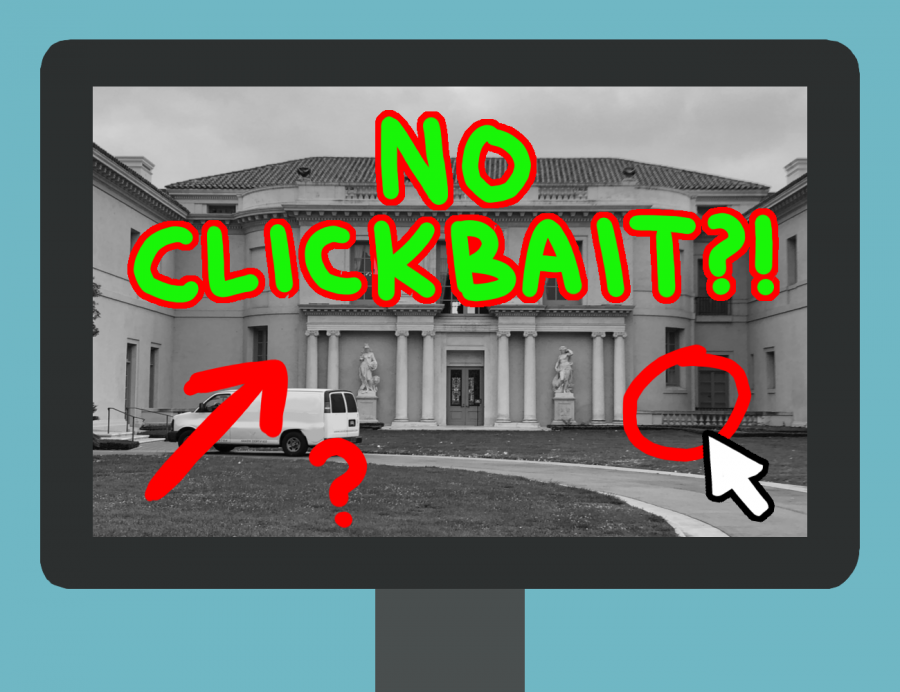Say Goodbye to Clickbait
September 27, 2018
If you’ve clicked a video or article with a title like “AMAZING MAN RESCUES 50 DOGS!!! YOU WON’T BELIEVE WHAT HE DOES NEXT,” chances are, you’ve fallen for clickbait. “Clickbait” is a term used to describe online videos and articles that entice people to click on them and view them. Clickbait content is usually fake, and almost never lives up to its extravagant title. Even so, people can’t help but to give in to their curiosity and view it. Here are some things to look for to help you recognize and avoid clickbait.
Titles
Titles are one of the main ways that creators of clickbait lead people to click and view it. Did you know that clickbait-style titles often include LOTS OF CAPITAL LETTERS AND EXCESSIVE PUNCTUATION TO GET YOUR ATTENTION?!?!?! That worked, didn’t it? They frequently use phrases such as “you won’t believe what happens next,” “the next fact will shock you,” “use one simple trick,” “discover the real truth,” and more. These phrases are what spark people’s curiosity and make them eager to learn the important, life-changing wisdom that they think the video or article has to offer. Additionally, clickbait content often comes in the form of a list, such as a list of the top 78 cat memes on the Internet. A video or article with the title “TOP 78 CAT MEMES ON THE INTERNET – NUMBER 18 WILL SURPRISE YOU!!!” is definitely clickbait.
Headlines
Clickbait news headlines can be more deceptive than other clickbait titles, but there are still ways to see past them. Many clickbait headlines challenge a well known fact, or give the beginning of a story with an obvious ending. Titles like “Do chickens really lay eggs?” and “You’ll never believe why the chicken crossed the road!” are examples of this. Clickbait stories frequently have exaggerated headlines. A clickbait article about a child blowing out candles on her birthday cake might have a title like “THREE-YEAR-OLD’S BIRTHDAY RUINED WHEN HER PARENTS LIT HER CAKE ON FIRE, THEN FORCED HER TO PUT THE FIRE OUT BY HERSELF!” If a headline seems too strange to be true, it’s probably clickbait.
Images and Video Thumbnails
Sometimes, clickbait can be recognized without even reading the title. Clickbait video thumbnails and article images use several tricks to capture people’s interest. A widely used strategy is to use a red arrow or circle to draw attention to something random in the image. This makes people curious to see what it is, but it is likely that nothing of significance is being pointed out at all. Large, bold, brightly-colored text is another popular feature of clickbait images. People’s eyes are naturally drawn to flashy colors, and clickbait creators use that to their advantage.
If you keep these things in mind while browsing the Internet, you’ll be able to spot clickbait content quickly and easily. You’ll never waste your time on clickbait again!

